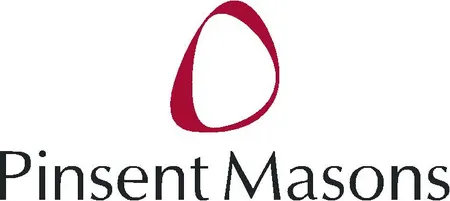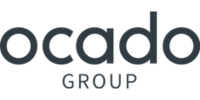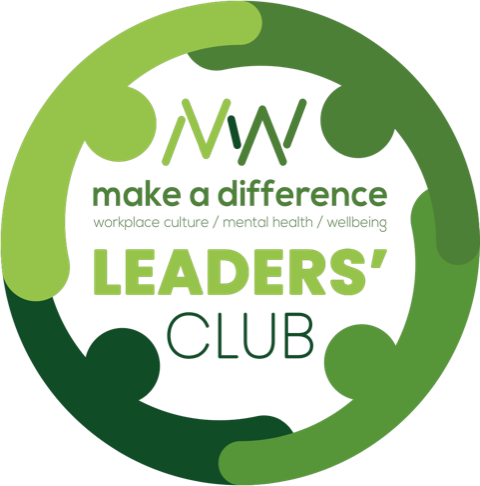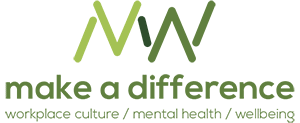2025 Speakers

Dame Carol Black GBE

Dr Monika Misra


Marc Molloy


Paula Stannett


Dr Richard Peters

Dr Shriti Pattani OBE


Tom Kegode

Chloe Muir


Charles Alberts


Gethin Nadin


Dr Lia Ali

Arti Kashyap-Aynsley

The 8th Annual MAD World Summit
Rethinking work, reimagining engagement, reinforcing health & wellbeing
Since launching in 2018, the MAD World Summit has been at the forefront of redefining employee health and wellbeing. In 2025, we’re going even further. This year, MAD World brings together four powerful tracks in one transformative day — built to break silos, spark cross-functional collaboration, and align workplace culture, employee health and wellbeing with business strategy.
As organisations adapt to ongoing change — from economic pressure to shifting employee expectations — the focus is no longer just on why health and wellbeing matters, but on how to make it work as a strategic lever for engagement, growth and performance. Senior leaders across functions are now asking:
- How do we move from fragmented efforts to integrated strategy?
- How do we focus on delivering measurable outcomes and ROI?
- How do we design work to support people — and enable performance?
“From strategic insights to practical takeaways, sessions are carefully curated to help you navigate uncertainty in an increasingly volatile world, support your people more effectively, and unlock their full potential—now and into the future”.
Claire Farrow, Global Head of Content, Make A Difference
Topics we’ll be addressing include:
- Debate: Employee health and wellbeing – strategic imperative, moral mandate or both?
- Keeping Britain working: The employer’s role in shaping a resilient economy through prevention, retention, early intervention and rapid rehabilitation
- Power in Alignment: How CHROs, CFOs and CIOs are collaborating to make health and wellbeing a business driver
- Leading through change: Supporting employees’ health and wellbeing through uncertain times
- Future-proofing health benefits: Focusing on prevention to manage rising costs without compromising care
- Navigating AI Disruption: Protecting employee health and culture in a tech-driven future
- Emerging health risks and how employers can prepare to maintain business resilience
- EAPs in a VUCA world – are they fit for purpose?
- Unpacking Psychosocial Risk: What’s driving it – and what employers must change
- DE&I in the new world order: Building workplaces that support everyone’s health and potential
- Future-proofing talent: Integrating health, wellbeing and skills development in a multi-generational workforce
- From Insight to Action: How the legal sector can lead with a data-driven approach to supporting mental health, wellbeing and culture
- Miscarriage to menopause: are workplaces failing women?
- The strategic advantage of a financially fit workforce
And more.
The MAD World Summit will bring together senior decision-makers from HR, Finance, Benefits, DE&I, Health & Safety, L&D, Culture, Occupational Health, and Communications — all committed to integrating health and wellbeing into the core of how business gets done.
Wherever you are on your journey, join us for the UK’s leading B2B event for workplace culture, health and wellbeing. You’ll leave with the tools, connections and confidence to make wellbeing strategy a business advantage — not just a business case.


We'll Be Sharing
Latest Make A Difference News

For the last eight years, I was known as a Workplace Wellbeing Consultant.
About a year ago, I stopped using that language and rebranded Ridgeflow Performance as a Performance, Leadership and Culture consultancy. Not because the outcomes I care about suddenly changed — but because the language I was using was limiting the conversations I could have, and the impact I could make.
Workplace wellbeing is one small part of a much bigger puzzle, yet it’s often used to describe almost everything.
Culture.
Engagement.
Leadership.
Performance.
Retention.
Energy.
“Wellbeing” gets stretched to cover all of it — and in doing so, I feel it has lost both clarity and influence.
The work didn’t really change — the framing did
Looking back, I don’t think I ever really did just workplace wellbeing work.
Even when I was brought in to help with:
- Stress
- Resilience
- Burnout
- Supporting team wellbeing
Once I spoke to leaders, understood the context, and looked at how the work actually functioned day to day, the work quickly moved elsewhere.
It became leadership work.
It became performance work.
It became culture work.
The real questions were always:
- What are we actually trying to achieve?
- What does good look like for this team?
- What kind of energy and standards do we want?
- How do we help people rock up ready to perform?
- Where does support end — and responsibility begin?
- How to we manage change effectively?
Those conversations rarely land well when framed as “wellbeing”. Now they land far better when framed as performance and leadership.
Why “Wellbeing” often loses power internally
Another semi-uncomfortable thing I have seen increasingly over the years: workplace wellbeing is often treated as a side issue.
It’s frequently owned by someone very junior.
It sits on smaller budgets.
It’s discussed on the edges of the organisation.
And crucially — it’s rarely what’s keeping senior leaders awake at night.
What does keep them awake is:
- Performance
- Culture
- Retention
- Energy
- Leadership capability
- Whether teams are actually delivering
When you talk about performance, leadership and culture, you’re suddenly in very different conversations:
- With more senior people
- With bigger budgets
- With genuine attention and urgency
Because this stuff matters.
Why performance framing changes the work itself
This shift in language also changes how the work is done.
In a “wellbeing session”, there’s often an unspoken hesitancy:
- Are we allowed to challenge people?
- Can we talk honestly about responsibility?
- Can we say that growth sometimes feels uncomfortable and requires discipline?
In a performance-focused conversation, those things are not only allowed — they’re expected.
You can say:
- If you want to perform in difficult conditions, you have to put the work in
- Support exists, but it isn’t a substitute for ownership
- Managing your energy, mindset, and behaviour is part of the job
You can’t really say that in a wellbeing workshop, right? You can say it in a performance one.
And that’s where I’ve personally seen the needle move most over the last year.
What I’ve seen change (fast)
Since reframing this work as performance, leadership and culture:
- Conversations go further, faster
- Senior leaders engage more deeply
- Budgets unlock more easily
- And the work actually sticks
Internally, I’ve also seen people who previously sat in “wellbeing” roles gain far more traction by reframing their work in the same way.
Same intent.
Same care for people.
Much more influence.
Why I’ve moved on from the term (not the outcome)
So when I say I don’t really use the term workplace wellbeing anymore, I’m not saying the goal has changed through the work I do at Ridgeflow Performance.
I still want people to:
- Feel good at work
- Feel supported
- Feel fulfilled
- Perform well without burning out
What I’ve moved away from is the idea that wellbeing should be the headline.
In my experience, when organisations focus on performance, leadership and culture — when expectations are clear, support is available, and people are treated like capable adults — wellbeing often follows anyway.
Not because it’s forced. But because the environment enables it.
So if you’re working internally in wellbeing and finding your efforts are often futile, here’s my genuine invitation:
Consider changing the language.
Start talking about:
- Performance
- Culture
- Leadership
- Energy
- Helping people win together
You might find — as I did — that the same work suddenly goes a lot further, a lot faster.
About the author:

Khalil Rener is the founder of Ridgeflow Performance and a top-tier leadership consultant, performance coach, and wellbeing expert. With a BSc and MSc in Sport and Exercise Science from Loughborough University, his work focuses on applying the principles of elite sport to help people and teams thrive at work. Khalil has supported organisations including DP World, Novartis, the NHS, JT Global, NatWest, Sport England, and many more—from global companies to schools, councils, and frontline teams. His breadth of experience spans industries, team sizes, and career stages, from senior leaders to students and early-career professionals.
You might also like:

Why I’ve stopped using the term “workplace wellbeing” and how it has helped make the boat go faster
Workplace wellbeing is shifting. More and more organisations across the UK are recognising that workplace wellbeing can no longer sit on the surface as a set of activities or awareness days. If organisations want to see a real return from their investment into workplace wellbeing, whether that be through improved performance, reduced sickness absence, or an improvement in retention, workplace wellbeing can no longer be seen as being separate to organisational design and their ways of working.
But what challenges exist for Workplace Wellbeing Professionals across the UK, that are preventing them from shifting to a whole-system approach to workplace wellbeing faster?

To understand more, we’ve reflected upon how learners from our 2025 cohort of the Accredited Level 5 Diploma in Leading Strategic Workplace Wellbeing plan to navigate this shift, and what they need to move forward with clarity and confidence.
This group of learners represented a wide range of sectors and roles: from the NHS, local authorities and colleges, to engineering and global pharmaceutical companies. Some learners held senior wellbeing roles; others worked in HR, health and safety or occupational health and were asked to take on wellbeing alongside their core responsibilities.
Although spanning across different roles and organisations, what united them was a desire to understand what effective, strategic workplace wellbeing really looks like and how to influence meaningful change.
A shared realisation: workplace wellbeing is bigger than anyone expected
An early theme emerged during the programme: many learners discovered that their understanding of workplace wellbeing had been shaped by the way organisations typically approach it. That is, operationally, reactively and often with an emphasis on activities or events. This isn’t a criticism of individuals. It reflects a widespread pattern: workplace wellbeing roles frequently evolve organically, often without strategic grounding or senior-level clarity.
What stood out was how openly learners acknowledged this. Rather than feeling discouraged, this became a moment of expansion. Understanding “what they didn’t know” created space for broader thinking, deeper insight and more confident decision-making.
As one learner put it, “There is no way I could have done or learnt what I have during these past 3 months, by only doing my job” (Sandra Ospina, HRUC).
Uneven seniority, equal expectations
Another clear pattern was the imbalance between responsibility and authority. Learners were expected to improve wellbeing, reduce sickness absence and support performance, yet their organisational positions varied dramatically. Some had direct access to senior leaders; others were operating without that visibility.
This mismatch mirrors what is happening in many organisations right now: wellbeing is seen as important, but the strategic infrastructure hasn’t caught up. Without clarity of role, access to data, or senior backing, wellbeing work risks becoming fragmented.
The barriers organisations still face
Several challenges appeared across almost every sector represented.
1. Helping senior leaders see workplace wellbeing as a business driver
Many learners spoke about the difficulty of shifting the perception of workplace wellbeing from a support function to a contributor to performance, retention and organisational resilience. Without this shift, long-term strategic work remains difficult to progress.
2. Data: valuable, necessary, and hard to access
Learners consistently noted challenges in gathering the data needed to diagnose issues, build business cases and measure impact. Data often sits in separate systems or departments, or exists without an agreed framework for interpretation.
3. Moving beyond “Events”
A universal frustration involved the expectation that workplace wellbeing can be improved through awareness days, campaigns, or isolated activities. Learners were keen to focus instead on preventing ill health by changing organisational practices, workload, job design, and leadership behaviours. Yet, found these conversations were not always well understood within their organisations.
For many, hearing that others faced the same obstacles was reassuring. It underscored that these challenges are systemic, not personal.
Turning points in the learning journey
One of the most powerful aspects of this cohort was the collective “lightbulb moments”. Points at which the wider landscape of workplace wellbeing became visible. Learners began to recognise patterns, identify organisational gaps and understand how to influence strategically rather than reactively.
Several reflections captured this shift:
- “This diploma opened my eyes to the bigger picture of workplace wellbeing and how I can drive meaningful change.” – Michelle Saunders (Medway Healthy Workplaces Lead)
- “What I’ve learnt will help me drive real meaningful change and achieve positive outcomes for employees.” – Sam Conaghan (Health, Safety and Quality Manager, REM)
- “I feel enlightened and empowered – like I’ve now got all the tools to drive wellbeing in organisations like never before.” – Matt Wilson (UK Wellbeing Lead, Computacenter)
Together, these reflections show a movement from uncertainty to clarity. Displaying a shift not only in confidence, but also in capability.
The direction of travel: what matters most going forward
Across the group, three priorities emerged as essential for the future of workplace wellbeing.
1. A move from wellness to workplace wellbeing
Learners consistently expressed a desire to shift their organisations away from wellness activities and towards preventive, systemic approaches that tackle root causes rather than symptoms.
2. Whole-system thinking
There was strong recognition of the need to consider the entire organisational ecosystem. Looking not only at individual behaviour change, but also at ways of working, leadership, and how employees interact with each other.
3. A new kind of conversation with senior leaders
Rather than discussing wellbeing in isolation, learners increasingly framed it around performance, retention, recruitment and organisational risk. This reframing is becoming one of the most effective levers for influence.
These priorities signal a maturing field. Organisations are beginning to understand that wellbeing is part of how they operate, not something that is an “add-on” or sits outside of day-to-day work.
What this cohort demonstrates about the future of wellbeing
If the experiences of the 2025 cohort reveal anything, it is that professionals across all sectors are ready for a deeper, more strategic approach to workplace wellbeing. They want to understand the organisational drivers that shape employee experience, and they want to influence change that lasts.
Their reflections highlight something important: when people are given the knowledge, tools and space to explore wellbeing as a business function rather than a set of initiatives, they don’t just gain skills, they gain confidence, clarity and strategic voice.
The cohort’s journey reflects a wider shift happening across organisations: a recognition that meaningful wellbeing work requires structure, leadership, data and system-level thinking. And there is a growing appetite to build those capabilities.
As one learner, Meera Thakrar from Berkshire NHS Trust, summarised:
“I’ve learnt so much. I’d highly recommend this course to professionals and anyone interested in workplace wellbeing.”
About the author:
Elliot Foster is the Head of Wellbeing Strategy, and Course Director of the Accredited Level 5 Diploma in Leading Strategic Workplace Wellbeing at SuperWellness. The only qualification based on the Workplace Wellbeing Profession Map . Through the qualification, he helps Workplace Wellbeing Professionals to be more evidence-based and strategic in their work, both increasing their confidence and improving the outcomes of their work.
. Through the qualification, he helps Workplace Wellbeing Professionals to be more evidence-based and strategic in their work, both increasing their confidence and improving the outcomes of their work.
With an MSc in Organisational Psychology, and experience working with both national and global organisations, he ensures that workplace wellbeing shifts from being a “nice-to-have” to a driver of business success.
Want to explore what the Level 5 Diploma looks like?
Join us at an upcoming Discovery Session, where we’ll talk about the course content, our upcoming intakes and how to take the next step in your development as a Workplace Wellbeing Professional.
Click here to register.
You might also like:

Reflections – The state of workplace wellbeing in the UK today
Our Movers and Shakers series spotlights the people shaping workplace culture and employee health and wellbeing. In this edition, we highlight the leaders moving up, out or across roles in December 2025 – from senior people and culture appointments to health and wellbeing advocates recognised in the New Year’s Honours List.
Yamuna Morton
First up is the incomparable Yamuna Morton who, after two years as HR Operations & Rewards with telecommunications company Hyperoptic, has moved to a new role as Chief Operating Officer at global investigations and advisory firm, Veleda.
Writing on LinkedIn, Yamuna commented: “As a founding member, it is great to embark on this new chapter with an amazing team and to build something from the ground up”. Yamuna is looking forward to driving Veleda’s growth, shaping its culture and creating an environment that enables all to innovate and thrive.
Sounds like you’ve got the perfect opportunity to shape a workplace culture that supports employee health and wellbeing from the outset Yamuna.
You can read about how start up Shift8 achieved this in this article: “How a robust wellbeing strategy helped Shift8’s employees become happier and healthier as well as improve their bottom line”.
Rohan Kallicharan
Next up is Rohan Kallicharan, who in December 2025 started his new role as Head of People and Culture with Christian Aid.
Commenting on LinkedIn Rohan wrote: “Really excited to join a great team and support our brilliant and critical mission. It’s not often you find a role which fuses skills and personal values in this way”.
Away from work, Rohan is a committed mental health campaigner and speaker around wellbeing. He is also a Trustee of The Choir with No Name and a keen runner who has run 107 marathons, raising over £45,000 for chosen causes.
You can read more about Rohan’s perspective in this article which he contributed comment to when he was Director of People and Talent with Carbon Clean: “Is your work environment fit for purpose in a hybrid world?”
Emma Gage
Our next Mover & Shaker is Emma Gage who, after eight years in multiple roles with Business in the Community (BITC), campaigning for better work, and making work a happier place, has returned to her roots in a People and Culture team – joining University of East Anglia as their new Employee Wellbeing Partner.
BITC is a long-standing partner of www.makeadifference.media and it’s been a pleasure collaborating with you Emma. We wish you luck in your new role and look forward to keeping in touch.
If you’re not familiar with BITC’s work around workplace culture, employee health and wellbeing, check out some of their reports, including their “Workwell self-assessment tool”.
Louise Dixon Chapman
Workplace culture, employee health and wellbeing span many different roles, and our network reflects this breadth. With workplace environment increasingly recognised as a crucial part of the wellbeing equation, it’s great to see Louise Dixon Chapman featuring in our latest Movers & Shakers.
After two years as Regional Director and Head of Strategic Workplace Advisory (UK & Ireland) at AtkinsRéalis, Louise has taken on the role of Interim Group Head of Real Estate, Workplace and Facilities at global payments and acceptance services leader Ingenico.
For more insight into the latest thinking on the link between workplace environment and employee health and wellbeing, explore our The Office section.
New Year’s Honours
Last, but not least, with a number of employee health and wellbeing advocates rightly recognised in this year’s New Year’s Honours List, they definitely deserve a place in our Movers & Shakers list this month.
Nancy Hey OBE
Huge congratulations to Nancy Hey, who is Director of Evidence & Insight at Lloyd’s Register Foundation. Here Nancy leads the World Risk Poll, impact & evaluation, and the Global Safety Evidence Centre. Nancy’s career covers 15 years in public policy, including10 years running the UK’s Wellbeing Evidence Centre.
Nancy has been awarded the honour of the Officer of the Order of the British Empire (OBE) in the 2026 Honours List for her services to wellbeing and tackling loneliness in the UK.
Ben Towers MBE
Still only 27, Ben started in business aged 11 and has since successfully exited his marketing agency, invested in disruptive start-ups and inspired millions. Through the benefits and engagement platform Happl, Ben is now on a mission to change the health outcomes of his generation.
Ben has received his MBE for services to the Startup Business Community, Excellence in Innovation and Enterprise.
Stu Skinner MBE
Meanwhile, mental health and resilience trainer Stu Skinner has been awarded an MBE for services to mental health through outdoor leadership, training, and community engagement.
Writing on LinkedIn Stu said: “I’ve dedicated the last 20 years to mental health work, often at the expense of my own. It’s been an unconventional life, with some incredible highs that have taken me on extraordinary journeys, and some very real lows along the way. This feels like validation more than anything else”.
Congratulations to all of you! What a great way to start 2026.

Movers & shakers in workplace culture, employee health and wellbeing
Wellbeing is going through a transformation of its own. Slowly shifting from one off perks and health campaigns to embedded organisational strategy, changing how we operate and the daily experiences we create that will win on retention, performance, and trust.
I write this from the perspective of someone who’s spent years building proactive, collaborative wellbeing programmes and now leads a global wellbeing function – a role that’s taught me the difference between short‑term initiatives and sustained cultural change.
Five trends shaping the future of employee health and wellbeing
These are the trends that I see shaping the next few years:
Trend 1: Defining employee wellbeing at an organisational Level
The first trend I see emerging is clear, individualised business definitions of wellbeing.
Every business is different and so are it’s people but co-creating a shared definition and language of wellbeing, that underpins the business vision and purpose allows everyone to build the environments needed to create positive workplace wellbeing.
Trend 2: Embedding wellbeing into leadership, governance and accountability
The next trend I foresee is wellbeing increasingly being embedded as governance. This includes companies moving wellbeing into board-level strategy, leadership KPIs, and manager accountabilities. That means wellbeing metrics in performance reviews, budget lines in workforce planning, and clear escalation routes for systemic issues.
When leaders are measured on wellbeing outcomes, programmes stop being optional and start delivering measurable business impact.
Trend 3: Mental health at work: from reactive to preventative support
My next trend is the continuing shift of mental health support from reactive to preventative so that it becomes an evolving programme from crisis support to continuous, low‑friction mental fitness ecosystems. This includes, rather than mainly focussing on mental ill health, thinking about mental fitness as our mindset, thinking and decision making in action.
Trend 4: Flexible working that protects cognitive capacity and prevents burnout
I also predict that flexibility will be increasingly reframed around time, rhythm, and cognitive recovery. Organisations will continue to experiment with ways of working, to preserve attention, reduce burnout, and make work sustainable when paired with outcome‑based performance measures.
Trend 5. Measuring what matters: moving beyond wellbeing vanity metrics
The final trend that I’m observing is a continued move towards real measurement rather than use of vanity metrics. By this I mean a move away from participation counts to outcome indicators such as presenteeism, sustained performance, retention of high‑risk cohorts etc. But in a way that’s relevant for every business rather than generic measurement.
Why workplace wellbeing is now a competitive advantage
Ultimately, I believe that we’re at a moment where employee health and wellbeing is a real competitive advantage rather than a checkbox. How you embed it now will define your culture and performance for years to come.
You might also like:

Rolls-Royce’s Nikki Kirbell: Five key trends shaping employee health and wellbeing
As employees face mounting financial pressure, rising mental health challenges and record levels of burnout, traditional, one-size-fits-all health and wellbeing benefits are no longer enough. According to workplace benefits platform Heka’s 2026 report, employers must move beyond trend-chasing and adopt proactive, personalised, health-led and data-informed approaches that genuinely support individual needs.
Poor mental health alone accounts for 14 million sick days a year, costing the UK economy an estimated £300 billion annually. Heka points out that companies offering flexible, personalised support for mental health, financial wellbeing, and physical health see higher productivity and lower burnout.
Productivity, performance and prevention
The growing focus on burnout is no coincidence. When employees are not supported mentally and physically, performance inevitably suffers. Heka’s data shows that productivity impairment linked to a lack of awareness or access to wellbeing benefits — including financial wellbeing tools, Virtual GP services and mental health support — costs employers an average of £3,200 per employee per year.
When employees understand what support is available to them, engagement rises sharply. One third of employees use mental health benefits each year when they know where to find them, significantly reducing sickness absence, presenteeism and burnout.
As Alex Hind, CEO of Heka, explains:
“Workplace wellbeing is not a ‘nice to have’ — it’s a necessity. When benefits lack strategy or flexibility, they become performative. Disengagement from benefits is often a symptom, not the root problem. Employees need clarity, relevance and choice if they’re going to thrive.”
Why demographics aren’t enough
While demographic data can help guide benefit priorities, Heka’s findings show it is a poor predictor of what employees actually use or value. Usage patterns are strikingly similar across age groups, genders and life stages — reinforcing the need for inclusive, flexible benefits rather than assumptions based on stereotypes.
Heka believes that whilst demographics may indicate where to start, they say very little about how individuals engage with their wellbeing support in practice.
The gap between perception and reality
There is a stark disconnect between employer confidence and employee experience. While 72% of employers believe their benefits meet employee needs, only 12% of employees say they are very satisfied with their package.
Employees consistently say they want preventative wellbeing tools — support that helps them stay healthy, engaged and productive, rather than reacting once problems escalate.
Key wellbeing priorities shaping 2026
Family friendly policies
Menopause, menstruation, parental leave, and reproductive benefits have emerged as a new frontier of workplace support, but the current landscape suggests employers still have a long way to go.
71% of UK employees now view reproductive benefits as retention-critical, and while 63% of managers believe fertility policies are crucial, only 19% of businesses have them in place.
Menopause support has long been ignored in the workplace, driving women out of the workplace, or forcing them to suffer in silence. Nonetheless, only 26% of UK employers have a dedicated menopause policy, and of those, only 9.5% have menopause training.
Support for neurodiversity
Neuroinclusion is not a ‘nice to have’, it’s a priority. People are increasingly seeking diagnoses for neurological disorders under the neurodivergent umbrella, including a 600% increase of adults seeking an ADHD and autism diagnosis. Neurodiversity is finally being taken seriously – moving from buzzword to boardroom strategy.
Masking ADHD and autism symptoms in the workplace can lead to disengagement, burnout, and meltdowns. It’s crucial that employee benefits are inclusive of all employees, not neurotypical employees alone. Neurodiversity is not a trend, it’s the reality. Workplaces must provide informed, flexible neurodiversity support to ensure neurodivergent employees can thrive.
A holistic approach to weight management
Physical health benefits are not a one-size-fits-all. One employee’s physical health could rely on movement, where they would utilise a gym pass as part of their benefit plan, whereas for another it could be assistance with access to GLP-1 jabs like Mounjaro.
Whether it’s movement or medicine, employee’s needs are individual. Access to GLP-1s has become increasingly difficult since the price hikes on 1st September 2025, and according to Medicspot, 62% of people say they’d feel more supported by their employers if weight management was available as a benefit, or if their company part-funded the treatment. In fact, 53% of people say they’re more productive at work after just a few weeks on GLP-1s.
Financial wellbeing IS wellbeing
Financial wellbeing and mental wellbeing are inextricably linked. According to Heka’s report, 21% of employees say their money worries are impacting their job performance. Financial wellbeing transcends ‘money worries’, and it’s less about handing out pay rises, and more about offering the right tools, resources, and support systems to help people proactively take control of their financial situation.
Employers can minimise anxiety by offering financial education, flexible pay options, wellbeing to manage financial stresses, and benefits that ease everyday spending. Financial support benefits don’t look the same to every employee, offering flexible, personalised benefits is the way forward to build resilient teams that thrive.
Looking ahead
Heka’s 2026 report makes one thing clear: workplace wellbeing strategies must evolve. Employers that prioritise personalised, preventative and inclusive benefits will be far better positioned to build resilient, high-performing teams in the years ahead.
You can download Heka’s report here: https://www.hekahappy.com/
You might also like:

Employee health & wellbeing trends shaping 2026: The shift from perks to personalised support
Across 2025, we’ve taken great pleasure in producing a series of free-to-attend webinars in partnership with leading suppliers of products and services designed to create workplace cultures that support employee health and wellbeing. Across the board our focus is on what it takes to enable both organisations and their people to thrive.
These are the nine webinars that resonated most with our network.
1. Keeping Gen Z employees happy, healthy and engaged with next generation benefits

Next generation employees, such as Gen Z (those born between the mid-1990s and early 2010s) have different values and needs than previous generations, and they want their employers to understand and accommodate those needs. But this can be easier said than done. This webinar, sponsored by Hussle, and including input from Euromonitor’s Adeife Onwuzulike, BNP Paribas’ Lauren Lunniss and Curry’s Gemma Dainty is top of our most-attended webinars. You can view the webinar recording on demand here.
2. Empowering neuroinclusion

When it comes to neurodiversity, employers are increasingly switching on to the need to move beyond “reasonable adjustments” to an inclusive approach that enables everyone – regardless of their neurological makeup – to thrive. Our “Empowering neuroinclusion” case study webinar together with MatchWare showcased NatWest’s approach. You can view the webinar on demand here and also view the follow-up webinar, which included input from Acas’ Julie Dennis outlining Acas’ recommended approach to neuroinclusion here.
3. Supporting the health and wellbeing of non-desk-based workers

The pandemic showed us clearly that the day to-day operations of many sectors – such as transportation, logistics, manufacturing, and retail – depend on the essential services that non-desk-based workers provide. Supporting their health and wellbeing is more important than ever, yet employers often struggle to address the unique challenges that non-desk-based workers face on a daily basis. Tune in to the practical insights shared in this webinar together with Westfield Health, including insights from Jaguar Land Rover, Wincanton and Sir Robert McAlpine.
4. Designing evidence-based workplace wellbeing programmes

Our second webinar of the year, together with Westfield Health addressed our network’s questions around how you determine which health and wellbeing interventions your employees truly want and need. It also explored how you create a flexible programme that accommodates a diverse workforce with varied preferences, schedules, and health goals. Including input from Westfield Health‘s Kate Platts, Yorkshire Water’s Susan Gee and Euromonitor‘s Adeife Onwuzulike, you can view the webinar on demand here.
5. Bridging the gap: smarter strategies for workplace mental health

While most workplaces offer mental health support on paper, the real challenge — and opportunity — lies in delivering the right help, at the right time, to those who need it most. If you’re finding that the support available through your EAP or PMI falls short of meeting employees’ needs, you can access the recording of the webinar to understand how to address this ‘gap’. Featuring insights from Onebright’s Shamira Graham and Healix’s Russell Smith here.
6. The engagement effect: a new frontier in preventative health

In this webinar we explored how employee engagement can act as a powerful buffer against health decline, presenteeism, and disconnection. Drawing on data from YuLife’s gamified benefits platform, our expert speakers revealed how weaving wellbeing into daily culture — not just crisis response — can reduce absence, boost retention, and build a thriving workforce. You can view the webinar, including input from YuLife’s Kate Whitelock, Baringa’s Samantha Hunkin and Entain’s Jessica Fitz-John here.
7. Supporting working parents: unlocking access to mental health pathways

Poor mental health in children and young people is rising at an alarming rate – and it’s having a direct impact on working parents. With long waits for treatment – sometimes months or even years – many families are left struggling without timely help. And when a child is suffering, focusing on anything else becomes unimaginable for parents. It’s no surprise that a parent’s focus, energy, and wellbeing can be deeply affected. Find out how Lyra Health can help in this webinar.
8. Bright nights, better business: boosting engagement, health, wellbeing and productivity of nighttime workers

Shift and night workers are the hidden backbone of many organisations – yet their unique challenges are too often overlooked. Sleep disruption alone is estimated to cost the UK economy £50bn every year through lost productivity, staff turnover and accidents. For the 8.7 million people working at night, the impact on health, relationships and overall wellbeing is significant. This webinar, together with Night Club, included C-suite insights from Catherine Muirden, frontline tips from Brakes’ Jodie Mansfield and expert tips from Night Club’s Ella Reynolds and can be viewed on demand here.
9. Unlocking potential: embracing neuroinclusion

This second webinar in partnership with MatchWare honed in on best practice for employers that have recognised the need to create a neuroinclusive workplace but are looking for ideas around how to achieve this. Featuring input from Acas’ Julie Dennis and the lived experience of Rio Tinto’s Dan Curtis, as well as MatchWare’s Matthew Jones, it’s well worth tuning in to watch on demand here.
We’ll be running more webinars across 2026. If there are any particular topics that you’d like us to address, we’d love to receive your suggestions. Please email me at info@makeadifference.media.

Nine most-attended webinars of 2025
While most of the UK sleeps, more than 8.7 million people are hard at work – keeping hospitals running, restocking supermarket shelves, patrolling our streets and ensuring that the economy keeps moving forward.
This unseen army of night shift workers is indispensable to a 24-hour society, yet often overlooked. The price they pay for keeping the country financially competitive can be steep: growing evidence shows that working nights carries serious risks for both body and mind. Disrupted sleep, disturbed circadian rhythms and social disconnection are responsible for strained relationships, along with serious impacts upon key areas of health and wellbeing.
When the body clock fights back
Sleep isn’t just rest – it’s a vital biological process that fuels memory, emotional balance and physical repair. Humans are wired to sleep in the dark and wake in the light, following a 24-hour cycle known as our circadian rhythms. Night shifts force the body to operate out of sync with this internal clock. That misalignment disrupts hormones, metabolism and immune function, throwing the body’s natural systems into chaos.
Even if night workers manage a full eight hours of daytime sleep, it’s often fragmented and less restorative than sleep at night – leaving them tired and vulnerable. And the risks increase with the time spent working at night.
There is a widespread perception – particularly among managers with no experience of working at night – that if you just get through the first few weeks of night shift work, your circadian clock settles down and your body gets used to working at night. In fact, academic research shows the opposite – 97% of night shift workers never adjust to working at night.
The physical health toll
A growing body of scientific research links night shift work to a higher risk of chronic illness. The evidence paints a worrying picture.
1. Cardiovascular disease: night workers are around 37% more likely to experience a heart attack than those who work during the day. The causes are complex: disrupted sleep, higher stress, inflammatory conditions, irregular eating and reduced exercise all play a part. Working nights also raises blood pressure and cholesterol, compounding the strain on the heart. Without regular recovery, the cardiovascular system remains in a state of constant overdrive.
2. Type 2 diabetes: the metabolic impact of night work is equally concerning. Studies show that night shift employees are 44% more likely to develop type 2 diabetes. Irregular sleep disrupts insulin sensitivity and glucose metabolism, impairing the body’s ability to regulate blood sugar. Add in inconsistent meal patterns, high-fat and high-sugar meals, sugar-dense snacks and caffeine-fuelled nights, and the risk grows even higher.
3. Sleep disorders: it seems almost inevitable – those who work through the night are more prone to chronic sleep issues. Sleep and Circadian Rhythm Disruption (SCRD) – marked by insomnia, fatigue and excessive daytime sleepiness – affects millions. Beyond making work more dangerous, poor sleep increases the risk of anxiety, depression and burnout.
The mental and social cost
The psychological strain of night work can be just as damaging as the physical effects. Sleep deprivation is a major trigger for mood disorders, and many night shift workers report irritability, low mood, memory lapses and difficulty concentrating.
The social impact is another hidden cost: night workers often miss family dinners, social gatherings and community activities. Over time, along with social isolation takes a toll. One study found that people who regularly work nights are up to six times more likely to divorce – a stark reminder of the human cost of working against the clock.
Reducing the risks
The challenges of night work are real, but the impact can be reduced. Employers and individuals can take practical steps to protect wellbeing.
For employers: predictable scheduling, adequate rest between shifts, regular health-checks, and access to wellbeing support make a measurable difference. Initiatives like Night Club are helping organisations put health and recovery on the agenda.
For individuals:
- Prioritise sleep. When you can sleep, make your bedroom as dark, cool and quiet as possible – use blackout blinds, earplugs or white noise.
- Create a predictable bedtime routine following the night shift. Try and sleep as soon as you can when you return home. You may also want to take nap an hour or so before starting the night shift.
- Eat well. Focus on whole foods, lean proteins and slow-release carbs; avoid caffeine and heavy meals before you try and sleep.
- Stay active. Exercise supports better sleep and lowers stress, and can be a powerful countermeasure to the effects of night shift working
- Take extra care driving home after the night shift. This is a dangerous time as “microsleeps” are common.
- Ask for help. Seek medical or psychological support if sleep or mood problems persist.
A collective responsibility
The effects of night work on health are not just personal – they’re societal. Sleep deprivation costs the UK economy a staggering £52bn per year in lost productivity, worker attrition and accidents; £20bn of this comes from night workers. Recognising night workers as a vulnerable group is a crucial first step in shaping fairer policies and healthier workplaces.
Our 24-hour world depends on those who keep it running after dark. Ensuring their wellbeing isn’t just an act of gratitude – it’s an investment in the health, safety and sustainability of our round-the-clock society.
About the authors:
Professor Russell Foster is a Professor of Circadian Neuroscience, Director of the Sir Jules Thorn Sleep and Circadian Neuroscience Institute (SCNi), and Head of the Nuffield Laboratory of Ophthalmology at the University of Oxford. A Fellow of the Royal Society and recipient of a CBE for services to science, his pioneering research explores how light and the body clock influence sleep and health. Since 2018, he has collaborated on the award-winning Night Club programme, with the SCNi providing the scientific foundation and evidence base that underpin its curriculum.
Night Club is an award-winning initiative designed to help businesses reduce the risks of night work and support shift workers in improving their sleep, health, engagement and performance. From live, in-person training experiences delivered at night, to management and leadership support that embeds a culture of wellbeing within organisations – Night Club’s unique interactive approach delivers proven results.
Trusted by over 40 major organisations, including Transport for London, Sysco, Carlsberg Britvic and ISS – Night Club has already helped 14,000+ night workers stay healthy, safe, and engaged.
You might also like:

The health effects of night shift work: what you need to know
Health and Safety directors, arguably, sit at the intersection of the world of CPOs and that of Health and Wellbeing Leaders (for features on their priorities, see here and here) and that position is becoming increasingly critical.
From speaking to them in this feature, one thing is clear: employee health and wellbeing can no longer be treated as a set of disconnected initiatives.
As work becomes more complex, more digital and more fragmented, Health and Safety professionals are being asked not only to prevent physical harm, but to address psychosocial risk, technological change, inequality and burnout — all through the lens of organisational culture.
Here, we explore the key Health and Safety priorities for 2026, drawing on insight from senior practitioners across the profession.
1. Mental health must be embedded into the core of health and safety systems
If there is one area where Health and Safety Leaders most clearly align with CPO priorities, it is this: mental health can no longer sit outside formal safety management systems.
Vanessa Harwood-Whitcher, Chief Executive of IOSH, is unequivocal:
“Psychosocial risks are one of the most pressing challenges workplaces face. We need to embed mental health and wellbeing into every aspect of workplace health and safety management.”
This mirrors what CPOs told us in our earlier feature: that reliance on reactive tools — EAPs, mental health first aiders, crisis interventions — is not enough.
Health and Safety professionals are increasingly advocating for structured, preventative approaches, grounded in recognised frameworks such as ISO 45001 and ISO 45003.
Keith Hole, Managing Partner, AntiroMedia, says:
“You cannot claim to have a safe culture if you are only protecting your employees’ bodies while ignoring their minds. Effectively embedding ISO 45001 and 45003 ensures that wellbeing isn’t just a ‘nice-to-have’—it’s a measured, managed, and protected part of our daily operations.”
Dr Shaun Davis, Chief Adjudicator at the British Safety Council, and Group Safety, Health and Wellbeing Director at Belron, says a key priority for him in 2026 on this front is:
“Continuing to promote the wellbeing agenda across all areas — keeping intersectionality front of mind and committing to supporting the positive mental health of all.”
2. Technology and AI are reshaping risk — and OSH professionals must keep pace
Health and Wellbeing Leaders often focus on how people feel about technology, with Health and Safety leaders increasingly concerned with how fast it is changing risk itself.
Health and Safety specialist Karl Simons OBE, advisor to the UK Government on shaping national policy on digitalisation, AI and occupational health, describes 2026 as the real start of the “autonomous era” of safety management:
“We now have the ability to predict and prevent harm using data, automation and artificial intelligence. AI can analyse trends, surface risks and prompt management intervention in ways we’ve never been able to do before.”
But this opportunity comes with its own risks — ones that strongly echoes CPO concerns about capability and governance (for more on CPO priorities in 2026, see here).
“If OSH professionals aren’t at the table with a good understanding of technology, data and AI, our voice won’t be heard,” Simons says. “We need to upskill ourselves and our teams so we can meaningfully contribute to digital strategy.”
Harwood-Whitcher, IOSH, agrees:
“The rapid adoption of new technologies — from automation to AI — offers opportunities but also introduces unfamiliar risks that require careful oversight.”
Ria Sooknarine, sustainability manager at United Independent Petroleum Marketing Company, highlights the cultural consequences of poorly implemented tech:
“As AI and automation become embedded in everyday work, organisations must proactively assess their impact on workload, autonomy and decision-making. Poor implementation can introduce technostress, cognitive overload and ethical concerns around surveillance.”
This aligns closely with what CPOs told us: technology is no longer just an IT issue — it is a people risk, a culture risk and a leadership risk.
3. Leadership behaviour to prevent harm
Where Health and Wellbeing leaders often talk about compassion and support, Health and Safety leaders frame leadership in terms of risk prevention and system integrity.
Malcolm Staves, Global Vice President of Health & Safety at L’Oréal, describes this as “Visible Felt Leadership”:
“It all starts and ends with management. Leaders must deliver what they commit to — that’s how trust and psychological safety are built.”
This focus on leadership behaviour as a preventative control is similar to CPO commentary we’ve seen in this feature on their priorities — particularly around accountability and tone from the top.
Jimmy Quinn, Health and Safety Director, Curo Construction, puts it bluntly:
“By 2026, psychological safety will be understood as essential to performance, not an optional wellbeing initiative. Cultures that enable people to speak up will prevent harm before it escalates.”
Maria Anderson, Director, Health, Safety and Wellbeing at University of East London, agrees:
“Psychological safety must be a key feature of any wellbeing strategy.”
Hole reinforces the safety implications:
“[Psychological safety] forms the foundation of great safety cultures. People must feel empowered to challenge unsafe behaviours and make suggestions.”
4. Growing inequalities across work types demand tailored safety responses
One area where Health and Safety leaders bring a distinct perspective is on inequality across different forms of work.
Harwood-Whitcher highlights the risks:
“Informal employment and platform-based jobs often leave workers without the protections others take for granted. Young workers and those in hybrid environments face unique risks that demand tailored solutions.”
While Health and Wellbeing leaders often describe inequality in terms of inclusion and belonging, Health and Safety professionals emphasise unequal exposure to harm.
As work fragments further in 2026, this gap is likely to widen unless proactively addressed.
5. Employee involvement is essential — not optional
Employee engagement is a familiar theme across wellbeing and people strategies, but Health and Safety leaders are clear that it’s a practical necessity for strategies to work.
Staves explains:
“It is vital to use the experience and knowledge of our diverse teams and include them in decision-making. Good leadership involves teams in risk management and consults them before important decisions are made.”
Craig Foyle, Chartered Safety & Health Practitioner Director, says that it’s about:
“Motivating leaders to lead by example and be the change.”
This aligns with what CPOs told us about trust and engagement — but with more focus on risk ownership and shared responsibility.
6. A genuinely holistic view of health
Health and Safety leaders increasingly reject the idea that people can neatly separate work from life.
As Staves says:
“People don’t leave their problems at the factory gate. Someone anxious about a sick child will not be themselves at work — and that can create risk. A holistic approach just makes sense.”
This perspective overlaps with Health and Wellbeing Leadership thinking — but Health and Safety professionals talk more in terms of hazard control, distraction risk and decision-making capacity.
7. Job design is emerging as a critical health and safety issue
Finally, Health and Safety leaders increasingly see job design — particularly in a tech-driven world — as central to employee health.
As Anderson says:
“People know they work in a high performance-driven world. So, our job is to create a workplace that builds resilience in a supportive, compassionate way. The workload is not going to disappear, the work pressure will always be there. This means clear expectations, healthier ways of working, and a culture that helps people handle change without burning out. When people feel supported as humans, they can do their best work, even in a fast, chaotic world.”
Quinn adds:
“Chronic overload, constant urgency and unclear expectations are now primary drivers of burnout. In 2026, organisations that actively manage workload and pace will see better wellbeing and performance.”
This aligns strongly with senior people leaders’ calls to move from individual resilience to sustainable systems and culture.
In summary…
While there are many overlaps with Health and Wellbeing Leaders and CPOs in terms of priorities, Health and Safety professionals are the system thinkers, focused most on translating good intentions into actual reduction of risk and harm.
In 2026, their priorities make one thing clear: health, safety, wellbeing and culture are no longer separate conversations to them — they are the same conversation, seen from different angles.
You might also like:

7 Health and Safety priorities for 2026
Even though this article was first published back in 2020, it’s as true now as it was then: Many of us have been working harder and longer than ever, with fewer breaks and limited opportunities for recovery.
In this article, Jo Yarker and Rachel Lewis from Affinity Health at Work outlined a number of hints and tips to help you protect and promote your wellbeing this Christmas; enabling you to rest and recover. These follow the DRAMMA model (Newman et al, 2014). This widely validated model (Kujanpaa et al, 2020) integrates existing need and recovery models and summarises how you can achieve maximum benefit from your leisure time.
The model focuses on six psychological needs: Detachment (switching off from work), Relaxation (unwinding), Autonomy (being in control of your actions and choices), Mastery (experiencing proficiency and skillfulness), Meaning (experiencing a sense of purpose and significance in your life) and Affiliation (feeling closely related and emotionally connected to people).
Which of these can you integrate into your Christmas break?
1. Detachment – switch off completely
Regardless of how long your break is, make sure that you have time that is free of work. Research (CIPD, 2020) has found that 40% of us check our emails at least 5 times a day on the weekend or on days off. Reduce the temptation by clearing away your work from home office, packing away your laptop, taking work email off any device you will need (such as your phone), communicating to all your colleagues and clients that you are going to be off, putting on your ‘Out of office’ and stating that you will not be picking up emails while you are off.
2. Recovery – give yourself time to recover
For many of us Christmas isn’t a time of relaxation but a time of great organisation, plans and effort. The challenges of the pandemic, lack of breaks and real holidays, along with work intensification has left the majority of us tired, exhausted and run down.
This year, try to build in some time for your own self-care and recovery at Christmas. Add a few minutes into your diary every day where you do something that gives you relaxation and recovery. Recovery is best when it is something different to work – so if you are a chef, you may not want to cook the Christmas dinner; and if your work is screen based, recover by time away from technology and video calls.
3. Autonomy – do something you choose to do rather than are told to do
There are so many ‘shoulds’ and ‘musts’ surround Christmas because we all hold expectations about what the ‘perfect christmas’ needs to include. We often play down our needs with the pressured beliefs that ‘it is all about the kids’ or that ‘we have to see all of our family’. These expectations can lead to excessive running about and guilt around letting people down or upsetting them.
This year, the pandemic offers us the opportunity to do Christmas differently and break from the expectations. Instead of doing what you have always done, break away from the ‘shoulds’ of Christmas, think about a Christmas that prioritises rest, relaxation and peace for you and your nearest and dearest.
4. Mastery – do something that gives you a sense of accomplishment
Research demonstrates that both learning, and doing things we are good at increases our self-esteem and this in turn has a protective effect on our wellbeing. Think about what you can do this break to give you that sense of accomplishment. Could it be revisiting the old instrument that you used to play, tackling a new recipe or completing a crossword or the trickiest jigsaw?
5. Meaning – reflect on what is valuable to you at this time of year
We can get so caught up in the run-up to Christmas in terms of getting everything ready and completing work that we don’t stop and reflect upon what we are doing and how it makes us feel.
Take a moment now to reflect upon what it is about Christmas that you really value and what is most important to you. Then consider whether you put the most time and effort into this. If you don’t, what could you change so that you prioritise the meaningful elements of Christmas? It may not be about stopping anything, but about changing the way we think, and worry, about other things.
6. Affiliation – build a sense of love and belonging
Christmas this year will be like no other. For many, this will mean not seeing the family and friends that we normally see. If this is the case, think about ideas for how you can build that sense of love and togetherness whilst separated. For instance look into organising virtual events or sharing stories and memories with each other.
Consider those in your community that aren’t surrounded by love and belonging and how you could give them joy and hope this Christmas.
Christmas is also a time for increased conflict with our loved ones. Being separated won’t have changed that, and in fact, being unused to others, may increase the likelihood of rows. If you do argue, give yourself a break – it is normal for this time of year, it is expected given the year that you have had, and move on. Focus on the present – take a moment to be thankful for what and who we have, rather than focusing on what we do not.
About the authors
Dr Jo Yarker and Dr Rachel Lewis are both passionate about understanding what we can do to foster fulfilling, healthy and productive work, particularly under times of challenge. They work in a job-share arrangement across dual roles as Directors of Affinity Health at Work, and academics at Birkbeck, University of London. Working with a network of leading academics, their research has been sponsored by the HSE, DWP, CIPD and the Mental Health Foundation. Together they have written more than 400 articles, book chapters, research reports, guides and toolkits and present frequently at professional and industry conferences.



















